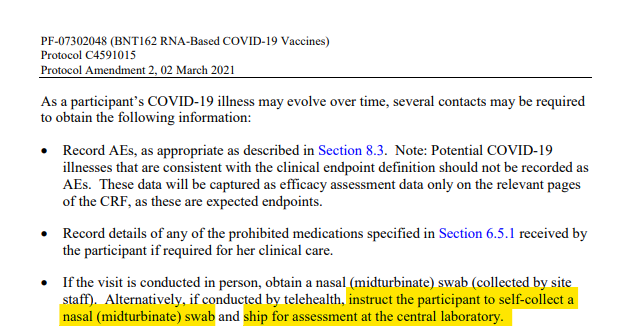WHOA! 🧀🧀🧀
This could be the worst paper that @thelancet have published since the #surgisphere fraud.
Kristine Macartney, who received $65m in government grants to push COVID vaccines, tells us it prevents non-COVID deaths.
Not a chance.
🧵
thelancet.com/journals/lanwp…
This could be the worst paper that @thelancet have published since the #surgisphere fraud.
Kristine Macartney, who received $65m in government grants to push COVID vaccines, tells us it prevents non-COVID deaths.
Not a chance.
🧵
thelancet.com/journals/lanwp…
Here is just one of the most ridiculous graphs I have ever seen in a paper.
The "Dose 2 > 180 days" group had the exact same mortality rate. So the "vaccine efficacy" in this group was 34%. With tight confidence intervals.
Not a chance.
The "Dose 2 > 180 days" group had the exact same mortality rate. So the "vaccine efficacy" in this group was 34%. With tight confidence intervals.
Not a chance.

But it gets worse!
The "unvaccinated" death rate drops by half in the second half of the year....
Whilst the "Dose 2 8-90 days" quadruples in the same time frame, yet designated as a "13.9% efficacy"
This paper could go down in history.
The "unvaccinated" death rate drops by half in the second half of the year....
Whilst the "Dose 2 8-90 days" quadruples in the same time frame, yet designated as a "13.9% efficacy"
This paper could go down in history.

The figures are all over the place. For "COVID-specific mortality" there is no significant difference between "Dose 2 > 180 days" and "Unvaccinated" as their confidence intervals cross. The "Vaccine efficacy" should include negative in the range. But of course it doesn't 

And the "Dose 3 > 180 days" has a death rate of 4.068 compared to 9.704, a 58% apparent drop. Except it is quoted at 71.9.
Who did these stats?
Who did these stats?

The "all cause mortality reduction" is ridiculous. In Australia COVID peaked at 3.2% of deaths during the pandemic.
So how can any reduction in 3.2% of deaths create a 70% reduction in all-cause mortality?
Give me a break.
This is just healthy user bias.
@profnfenton


So how can any reduction in 3.2% of deaths create a 70% reduction in all-cause mortality?
Give me a break.
This is just healthy user bias.
@profnfenton


This is just a skim of the paper. There is no way this has passed an adequate peer review. There are red flags everywhere.
For instance this is just the declared interests. There are more undeclared interests...
For instance this is just the declared interests. There are more undeclared interests...

...such as the involvement of the supervising author with the NCIRS which literally curates this data.
... that apparently they don't actually have access to. So you can't check it.
arkmedic.substack.com/p/how-to-lie-w…

... that apparently they don't actually have access to. So you can't check it.
arkmedic.substack.com/p/how-to-lie-w…

But don't worry.
@thelancet only publishes the best science, at the best price pharma can buy.
the-scientist.com/features/the-s…
@thelancet only publishes the best science, at the best price pharma can buy.
the-scientist.com/features/the-s…
@threadreaderapp unroll please.
• • •
Missing some Tweet in this thread? You can try to
force a refresh

 Read on Twitter
Read on Twitter

















